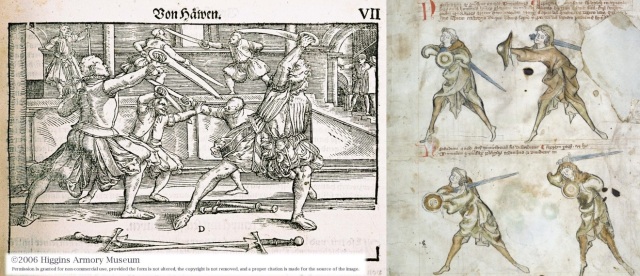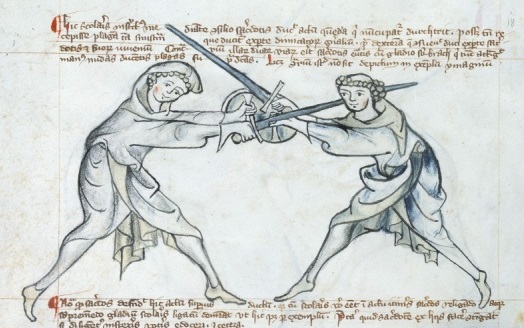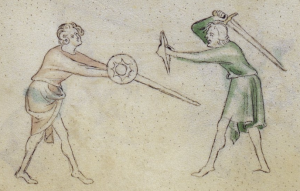The topic of Common Fencing is one of those recurring topics in HEMA. People have been trying to figure out exactly what the common fencing of the medieval and renaissance period looked like. This is probably due to the fact that most of the manuals we have are NOT “common” fencing but rather some sort of advanced system taught by a knight, or nobleman, or someone otherwise special, usually making hinting references to what techniques are “common”. In fact, many of the systems we have manuals for seem to be systems designed to beat the common fencing of the period.
I will not get into the Liechtenauer system and its relation to common fencing, or the common fencing with the longsword in the 15th century. Others have delved into that in more depth already and are more knowledgeable than I am about it. In this article, I will discuss the so called “common fencing” of MS I.33. I have discussed it previously in the context of the intended audience of the manual, but this article will discuss the specific techniques and style that we can gain from examining the references to common fencing in I.33. Continue reading →




